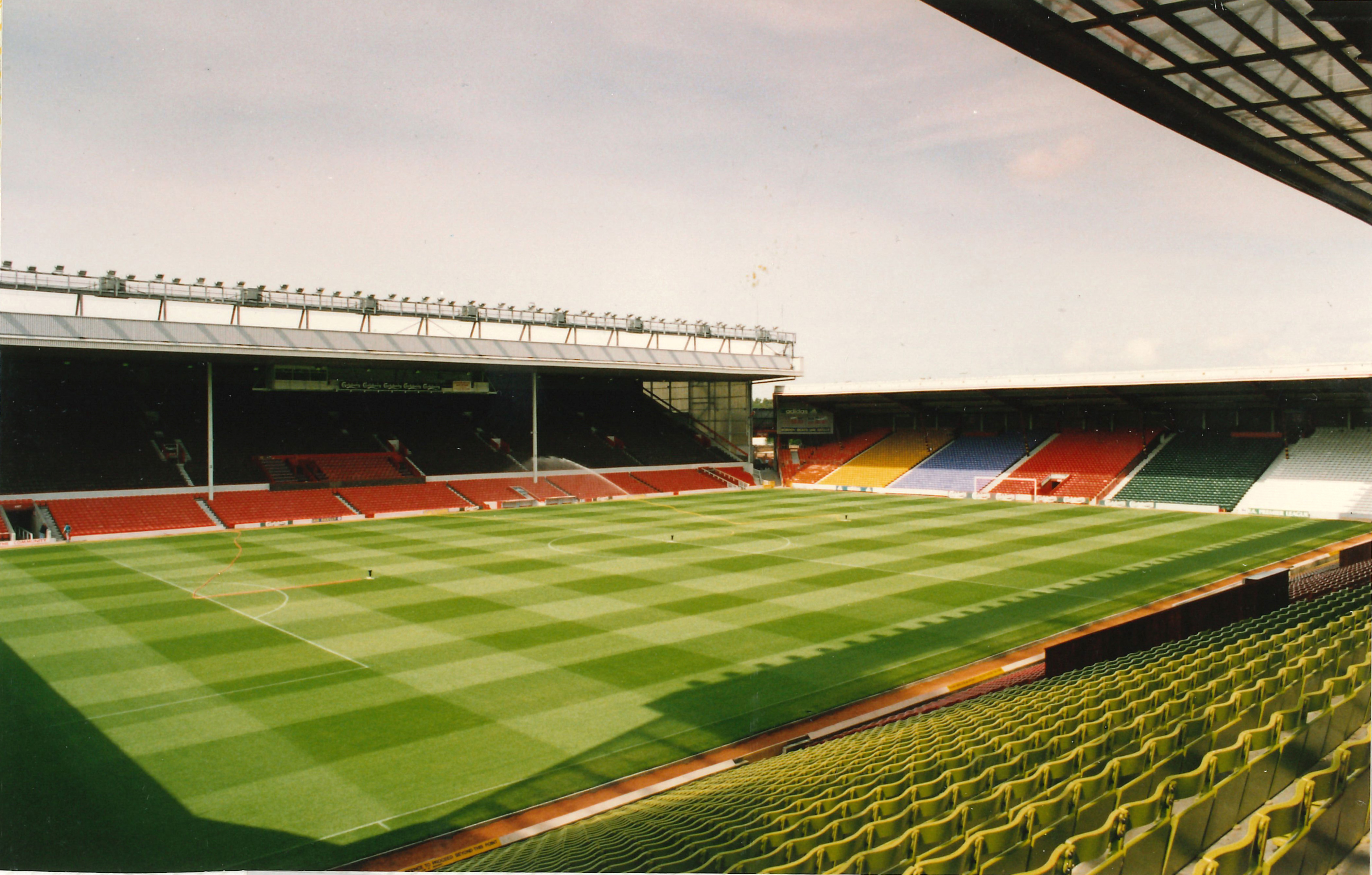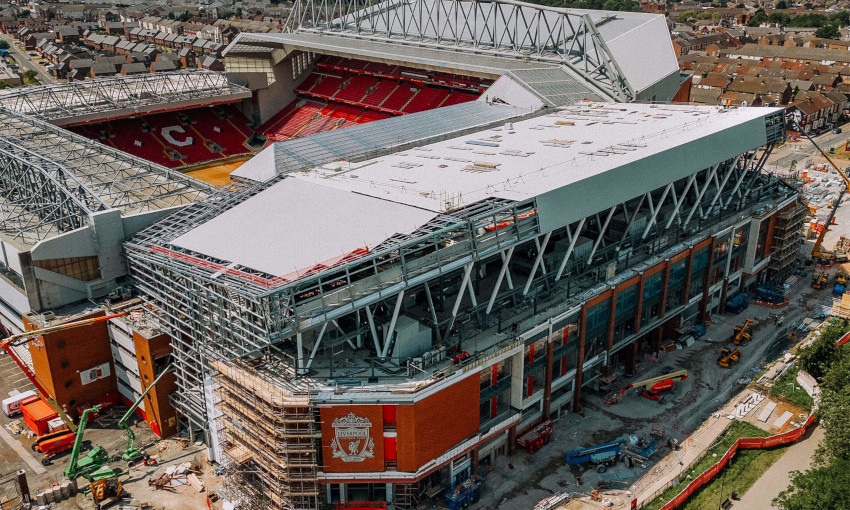A short history of the Anfield Road Stand's evolution
With the expansion of the Anfield Road Stand continuing, we take a look back at the evolution of that end of Liverpool's home stadium.
The Anfield Road end has had its share of famous moments during more than 130 years of Reds history in L4, from outstanding goals to critical finishes and special celebrations.
The latest redevelopment of the stand began back in September 2021 to increase the stadium's capacity to 61,000 and is on course to be completed for the start of the 2023-24 season.
Read on for a short retelling of how the Anfield Road Stand has changed over the decades...
Where it all started
LFC made Anfield its home upon being founded by John Houlding and his associates in 1892, after previous tenants Everton moved from the ground to Goodison Park.
Though there were stands in place when the club was 'born', a new one was built on the site of what is now the Main Stand in 1895, with the original Anfield Road Stand being constructed eight years later.
The end required work after being damaged by a storm during the 1909-10 campaign, while a subsequent idea for a 'triple-decker' stand to be created on Anfield Road did not come to fruition.
For 60 years or so, therefore, little changed in that part of the ground. But the success of Bill Shankly's first great Liverpool side, combined with the legendary manager's insistence on impeccable standards, meant Anfield needed refreshing during the 1960s.
Two years after a new Kemlyn Road Stand was built (on the side of the stadium that is now named in honour of Sir Kenny Dalglish), the Anfield Road end was expanded into a larger standing area and a roof added in 1965.
Seats installed and Shankly remembered
It stayed that way until 1982, when seats were added. They weren't just in the standard red, though, at the request of then-boss Bob Paisley.
When watching reserve games, with the stadium far less full than usual, Paisley felt players in the famous all-red kit were harder to see against seating of the same colour. As such, the Anfield Road end had sections in yellow, blue, white and green.

The same year saw the unveiling of the Shankly Gates, erected to pay tribute to the former manager who had died the previous year.
They were originally at the corner between the Main and Anfield Road Stands, but when the former was redeveloped in 2016, the gates were moved to the opposite corner at that end of the stadium.
Two tiers and rail seating
For more than 90 years, the Anfield Road Stand had consisted of a single tier. But in 1998 the second level was constructed to provide additional seating.
More recently, there was the introduction of seats with safety rails that enable fans to stand safely when cheering on their heroes at key moments of a match.
In 2021, around 6,000 new rail seats were put into the lower tier of the Anfield Road Stand. There are also now 4,300 on the Kop.
Expanding further for 2023-24
LFC's current expansion of the Anfield Road Stand received planning permission from Liverpool City Council during the summer of 2021.
Work on the project then officially began in September that year, with Reds manager Jürgen Klopp putting the first spade in the ground at the commencement ceremony.
Almost two years on, work continues towards completion of the development for the start of the 2023-24 season, with the exterior recently flourished by the installation of a 550-kilogram club crest.



